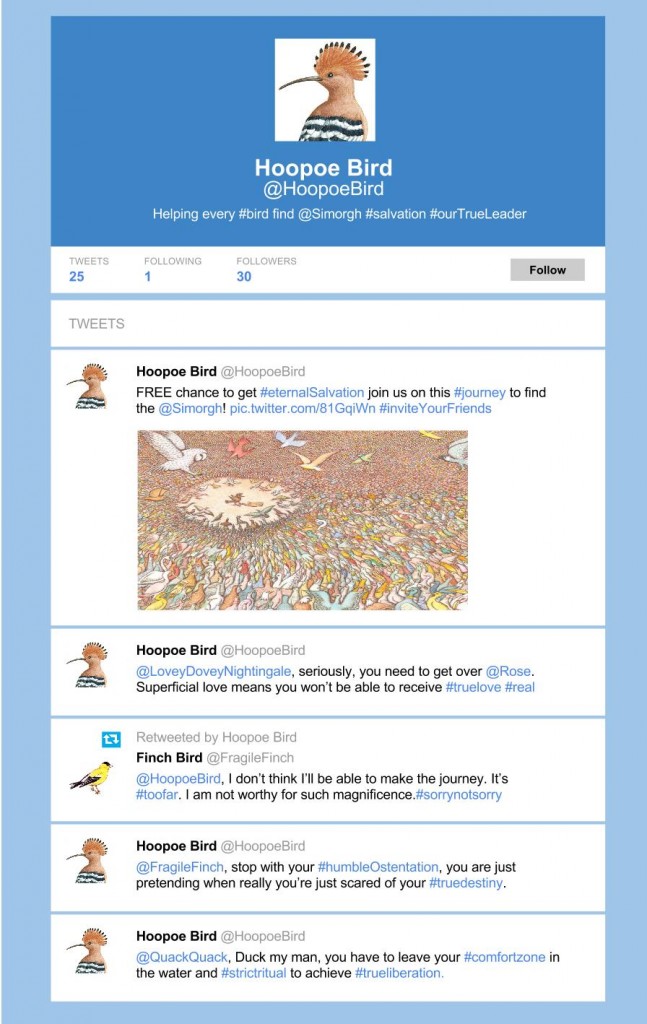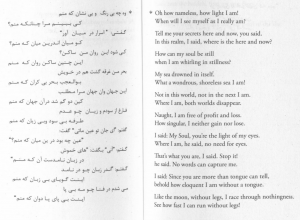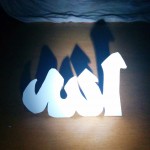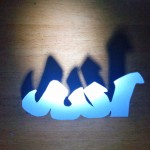A Journey of Understanding
May 9th, 2014
A Journey of Understanding
Introduction to My Blog Posts and My Reflection on the Class
(https://blogs.law.harvard.edu/jming/)
For a PDF version, please see AIU54 Blog Essay.
Before I this semester, I was only able to approach Islam as an intelligent observer–I approach the subject as someone with an academic background in other fields, with some scholarly interest in this one. I would not consider myself particularly, ignorant, as I was open to the idea of learning more about the topic, but I would not consider myself particularly knowledgeable either. I had some middle school knowledge about some of the simplified and abstracted Pillars of Islam, but barely knew the difference between Sunni and Shi’a Muslims beyond the politicization of some of the conflicts being reported in the media. And I acknowledge that my perception of Islam is colored by the information that is presented to me, from the attribution of violence to the religion of Islam from the Taliban to Nigeria’s Boko Haram in the #BringBackOurGirls incident. But when I was in India two summers ago, I was standing on top of the “tower” in Jama Masjid (which I now realize is a minaret), overcome with serenity, with peace. And as I was watching the prayers during Ramadan in the Nizamuddin Dargah, I was surrounded by activity and spirituality all around me. But even in both places, I was not sure what the meaning of all of this was–why is there a tower on the masjid? How are the people set up when they are praying? In taking this class, I wanted to answer some of these questions and bridge the gap between understanding just some of the textbook details of Islam or the sensationalized media coverage to being immersed in the vibrant culture associated with it.
The blog posts presented document my journal of understanding from an intelligent observer to an educated one. They highlight some of the weekly concepts brought up in class and discussions, such as qur’an recitations, the life of the Prophet Muhammad, Islamic art in architecture, and ghazals and miniatures as well as the stories of the Conference of the Birds and Persepolis. And they do so in a way that reflects not only my increased understanding and internalization of the basic principles that were being taught during class, but also the context in which this knowledge exists, from my personal artistic abilities and talents in the artforms that I am creating to the position of modern society, including the infusion of technology and current references. Rather than having a clash of civilizations, presented is the product of a synergy, a constructive effort of civilizations. In viewing the blog, it is important to keep an open mind to all of the cultures and factors that have come together to create these works of expression. The goal of these blog posts is to accessibly contribute to better and potentially changed understanding and perception of the art and culture of Islam.
In order to understand the blog posts, there are some basic concepts of and definitions associated with Islam that should be laid out. First and foremost, Islam is a monotheistic religion that approximately a fourth of the world population practices. What is interesting coming from a Judeo-Christian dominant background, is that Islam is within the same family of religions as Judaism and Christianity. As a matter of fact, Muslims consider these people to also be ahl al-kitab, or People of the Book, sharing similar scriptures, religious histories, and heroes and protected under Islamic Law. The difference is that in Islam, the scripture was revealed to the Prophet Muhammad during his mystical night journey, known as the Isra and Miraj. The Prophet Muhammad holds an exalted position, including having the roles as a messenger or intercessor between the human and the divine and is revered to the point that stories of his life known as hadiths are studied to try to adopt his custom, or sunnah. All this is proclaimed in the shahadah that all Muslims recite, stating that “There is no god but God, and Muhammad is the messenger of God.” All those that recite the shahadah are known as Muslims, or those that undergo the action of submission to God, or islam. This is one of the five pillars of Islam, also including salat, or ritual prayer, zakat, or alms giving, sawm, or fasting during Ramadan, and hajj, the pilgrimage to Mecca, as can be afforded.
However, beyond some more basic concepts, there are many different communities of interpretations of Islam. This can stem from even the way in which some of these concepts are presented. For example, the divide between Sunni and Shi’a Muslims can be traced back to the time of determining post-prophetic authority–how power would be transferred after the Prophet Muhammad passed on. And because the Shi’a believe in the passing of power in the Nur Muhammad, or the light of Muhammad, transmitted through the ahl al-bayt, or the Family of the House, or the relatives of the Prophet. This is depicted in “Light of Muhammad,” the blog post for week 4. For that reason, the Shi’a often append another line to the basic shahadah, stating that Ali, or the son of Muhammad, is the friend of God, among other things. And since the holy book, the Qur’an was based on an oral tradition and passed on many generations before being recorded by hand in an ancient Arabic, any translation would be regarded as an interpretation, and the right to interpretation has many prerequisites and is a hotly contested issue. Therefore, studying Islam can be done using a devotional, textual or ritualistic approach, but those would not fully cover the diversity of the population. The class and this blog present a cross-cultural study of the religion, focusing on art, to understand the different ways in which Islam is interpreted and presented.
This class really highlighted the idea of the many different flavors of Islam. For example, looking at the idea of Islamic architecture that was discussed in class and highlighted in the Mirror to an Invisible World documentary, each of the architectural styles really drew from its own environment. Since the definition of a mosque relies mainly on having a place for prayer that has a wall that faces Mecca with an indentation called a mihrab. Since then, other elaborations on the interpretation of what a mosque is have been developed, including more traditional Mughal architecture including domes and minarets. Some examples that were given include the grand construction of the Alhambra, drawing from the similar architectural style of its surroundings while infusing some of the natural sandstone that is common to the area. Or looking at context-specificity in having less obvious minarets and other common denotations of the mosque regions under much religious divide, as described by a guest lecturer. Another example is the great mosques of Djenne, where the mosque is constructed using the mud that surrounds the area, taking in the literal natural environment. This adherence to nature falls in line with observing the surroundings and perceiving the ayats or signs of God’s creation all around. This idea of the beauty of God’s creation in the natural context is highlighted in the week 6 blog post of the “Arabesque”, drawing inspiration from plants in my own surroundings.
Having a context-based interpretation is also important with regards to having an interpretation based on personal level, as seen in the New Muslim Cool about a Puerto Rican American rapper’s take on Islam in his own community and context. I infused my personal interest in technology to a traditional allegorical story in the week 10 blog post of the “Twitter of the Birds.” And having a personal interpretation truly depends on having both the knowledge be based on experience and being able to express this experience in a way that is best for the individual. This experiential nature is very strong in both the Sufi mysticism, which believes in truly removing the self and all distinctions to blend into the surroundings, the everything. This type of transcending experience is seen in the qawwalis where the musicians pour their hearts into their worship and adoration or dances such as the Damba dance of the Northern Ghanaian Muslims as described by a guest lecturer. However, the same concept of having experiential interpretation is also true for more mainstream Muslims that do not necessarily subscribe to Sufi mysticism. Since the Qur’an was originally passed down in generations through hafiz or guardians of the Qur’an, there is a strong oral and aural experience associated with the recitation and listening of the Qur’an. And after generations of history, there are also different styles for the recitation on top of the basic tartil and tajweed guidelines spelled out that allow for the expression of devotion. The same idea can also be held for prayers or call to prayers. This process of experiencing and expressing is shown in the week 3 blog post about the “Improvisation on the Adhan.”
And yet, even though Islam can be interpreted differently among different local worlds, there is a universality in the concepts presented by Islam. There is artistic beauty, a concept that resonates across cultures. For example, in the course we talked a lot about the ghazals, which are often paired with miniatures, as seen in the blog post for week 9 “Ghazals and Miniatures.” These two art forms that have been examined in literary and artistic traditions across the world. Miniatures are displayed in many prominent collections of artwork, including the Metropolitan Museum of Art exhibit that we visited, as well as incorporated in various wall hangings, book covers, and more. There are many adaptations of the ancient Persian form of poetry into English, whether it is translations of the previous poems or the creation of new art. I even at one point bought a book of Rumi’s poetry, finding solace in his beautiful words and uncanny ability to depict the human condition. The naturalistic imagery is fairly common across all means of expression, but, more importantly, the feelings and emotions of love and loss are relatable and universal. This reminds us that we, as humans, are all witnesses, sharing the world in which we live.
Similar to Christianity, and what I would hope is true for most major religions, there is a strong emphasis in Islam on social justice and community work and we saw many images of soup kitchens during Ramadan. The hadiths depict Muhammad as not only devout, but also kind, extending sympathy and understanding across the different cultures he encounters, regardless of their religion, but because of their humanity. These are not too different from the parables of Jesus, which also spread the teachings of various virtues. As depicted in the comic, or the final blog post for week 12, “Islam Isn’t Scary,” I am personally interested in cohesion and service, so this idea of having caring and compassion as a basic guiding principle in the religion really speaks to me. The universality shows that Islam is not by any means scary, rather, that the individuals who practice Islam or any other background are as much cut from the same cloth of humanity.
I am thankful that I took this course to get a better understanding of Islam and its culture. This will prove to be a great foundation when I spend my summer in the United Arab Emirates and for my future endeavors as a global citizen. It also will be a good basis for understanding more about Islam in the context of my own home country. As depicted by The Reluctant Fundamentalist and a recent movie I saw by Bollywood star Sharukh Khan, My Name is Khan, being Muslim in America, especially post September 11th, is becoming increasingly difficult. I hope that I can share what I have learned and help spread better awareness and understanding for Islam to others in my own local community. And through these blog posts I hope that you can as well.
Adieu, The Night (Ghazal Project)
May 7th, 2014
http://www.youtube.com/watch?v=GZpVGT85TDE
Adieu, the Night.
Your chimes charm and your calls keep me up through the night,
I yearn for your glow, a flower stretching to view the night.
As a moth mesmerized to the flames that consume its soul,
The pointer from my heart is immutable | and to you I flew the night.
It is an addiction, every moment, I need to be plugged in, with you,
A mutex lock on my heart, I am weak, you subdue the night.
Separated by a screen, it is hard to for me to speak my heart,
With this intoxication, loss of memory, I hope to renew the night.
But there is no equilibrium here, and you encrypt my words, meanings,
I am naive to your manipulations, I thought I knew the night.
I am a singleton, restricted to only you, but your dynamic type means
through the hearts of many you will pass through the night.
Without you, I have no meaning, I am the null set, empty, restless,
You gave me the hope in darkness to break through the night.
Alas, this love is an intractable NP-hard problem that I cannot solve,
Since this love #includes no Joy, I can only say adieu, the night.
Throughout this ghazal, I am playing with the imagery of the traditional Persian love poetry with today’s themes of technology and computer science. The allusions to all of the different concepts enhances the level of obscurity by making it difficult to understand the references. This draws interesting parallels between the unrequited love with the fervent need for technology by modern society. In the background, I am using Muse’s Exogenesis Symphony, which also combines traditional Western classical music with more current electronic music.
The poem follows the ghazal patterns with the radif of “*oo the night” where the qafiya is “night”. This is inspired by Aga Shahid Ali’s poem “Tonight”, where unlike other ghazals in English, it employs both a qafiya of “tonight” as well as the proceeding rhyming syllable in the radif “*ell tonight.” I chose night as the repeating word because night is often associated with uncertainty but also promise, despair, but also the light of love.
The first and second couplets use nature imagery to talk about the mesmerization the persona has for her love. The first couplet talks about a flower reaching its face into the light, a generally nurturing relationship, but it replaces “light” with “night”, creating a dark tension that is accentuated by the distracting need for an electronic glow, a desire the persona cannot control. The second couplet brings up the common imagery of the moth being drawn to the flame in a self-sacrificial manner. The persona knows that the result will harmful to herself, but cannot change the course of her heart.
The third couplet talks about addiction, which in traditional ghazal imagery consists of a love that makes the persona feel powerless, feel week. Adapted to modern concepts, this brings out the idea of needing to be “plugged in” at all times and the increasing reliance on technology, as if it has entrapped the soul.
The fourth and fifth couplet deal with different aspects of the difficulty in communication. The fourth brings up the concept of a “screen” which is both alluding to the veil in traditional ghazals as well as the newer computer screen. The intoxication is also another common theme, and in this case is associated with loss of memory, a more technological concept in addition to its colloquial meaning. The fifth couplet talks about manipulations and encryptions, showing how often the elusive lover will obfuscate the information to obtain what they want, leaving the persona restless and fearful.
The next couplet talks about the other common theme of the flirtatious lover like the nightingale in Hafiz’s poems who floats between one love and the next, equated with concepts in computer science that illustrate quickly changing definitions.
The final two couplets talk more about despair and emptiness, also a theme that arises from the poetry of Rumi along with other Persian poets. The penultimate couplet talks about how the love generates meaning for the individual, creating a dependency on the lover for their own meaning and identity. Without the lover, the persona is empty, which also has religious significance within the Sufi mystic ideology of being an empty vessel, a precursor to destroying all distinctions to truly experience life. The eighth couplet points to fatality, giving up this impossible quest, balancing between fate and free-will.
At the end, the poem is signed with my tallkus of “Joy” used both as a proper and common noun included in the sentiment of the last line, which also becomes the title of the poem.
I feel this style of poem best exhibits the concept of the cultural studies approach, because I incorporate both the traditional structure and themes of the ghazal while also bringing in some of my own personal context, to create a new, personal interpretation.
I hope you enjoy it!
Islam Isn’t Scary (Week 12)
May 7th, 2014
For Week 12, we read two of my favorite stories: Persepolis and Sultana’s Dream. I had read Persepolis years before, but found it still just as powerful, the images and narrative a timeless way to communicate to a larger audience. Inspired, I decided to use the comic (my rudimentary attempts compared to Marjane Satrapi) as a medium for conveying the messages that I have learned in AIU54.
I was inspired to draw this due to some of my experiences outside this class but related to the perception of Islam in America. The first incident depicted in the comic is when I flipped through a recent TIME Magazine whose cover blared about the TALIBAN, the tagline bringing up the sweet spots of women’s rights and democracy, pitting the ISLAMIC fighters up against two of the most prized values in American, and Western, society. It is no surprise then, with my second incident, where my friend was warning me that “ISLAM IS SCARY.” Yet I realize that he is not too much out of the ordinary, as most of what Post 9/11 America knows of Islam is generalized across the violence and tension seen through terrorism.
Then, in the comic, I bring up some of my previous experiences with Islamic culture (my friends who are Muslim or visiting some mosques/durgahs when I was in India two summers ago), emphasizing the friendship and beauty of those two exposures to the culture. I also dispute the ridiculousness of arguing that an entire religion is SCARY, an entire people who occupy countries all of the world.
I point out that there are many different “flavors” of Islam, very much in line with the cultural studies approach that we have been learning, from the two differing types of architecture–the regal of the Dome of the Rock to the natural of the Great Mosque of Djenne–to the two differing types of religious devotion, meditation, and spiritual transcendence–the excitement of the Whirling Dervishes (can also be interpreted as the Damba dance we talked about in class) to the serenity and peacefulness of prayer.
And there are many other words to describe Islam other than SCARY. One of my favorite aspects is that it is social justice oriented, alluding to some of the hadiths we talked about in class that call the submitters to serve, to help others. And of course I also bring up some of the ideas that we learned about Islamic art we learned in class, from the moth-flame or nightingale imagery of love, of poetry, as a harmonium/pump organ that is often used in qawwalis, and an attempt at an arabesque/geometric shape to represent the many different types of art that we have studied.
I hope that with comics like these or with words that the other students write, Islam will no longer be perceived as just SCARY, a lot of different things, more positive words, like beautiful, kind, loving, devotional. This can help prevent future clashes of civilizations, and potentially encourage more synergy and teamwork in the global society.
The Twitter of the Birds (Week 10)
May 7th, 2014
Since I’m a computer science concentrator, I’ve been meaning to find different ways to combine the creativity of computer science to the response blogs that we are writing for this class. When we came across the story of The Conference of the Birds, I really enjoyed the allegorical writing of the Persian poet and wanted to find a 21st century way to represent his words. Thus, I created a fake screenshot of the “Hoopoe Twitter,” as seen below.
I felt like this is a fun and creative way to approach the story. First, there is the obvious connection between “Twitter” and “tweeting” and a story about birds. Then, Twitter is a great platform because there is the ability for the Hoopoe both to individually message each of the birds as well as broadcast the announcements across the world, calling out for all to follow. This solidifies the position of the Hoopoe as the Messenger, the leader of the birds in allowing them to find their own salvation. And since Twitter only allows 140 characters (a loose limit on this creative piece), the language of the Twitter feed is more accessible to the general public and makes the whole story more modern and real.
In setting up the Twitter feed, I decided to pick a flattering picture of the Hoopoe bird that I found online, drawn in pencil and in the style of the Persian mystical poetry. The username HoopoeBird is fairly generic, but the tag line highlights his main goal as a Messenger (with funny hashtags of course!) The number of Tweets was randomly generated, but the fact that the Hoopoe is following just one shows that he is following the One True God, and the fact that thirty are following the Hoopoe shows that these are the thirty birds that are following Hoopoe on this spiritual journey documented by the Conference of the Birds text.
For each of the tweets, I decided to focus on a few of the “attachments” and “vices” of the birds that are brought up in the story. This section was interesting because the Hoopoe bird was like a shaykh going through each of his potential disciples and speaking about their weaknesses to help strengthen them. It is also an interesting section to allow the readers to assess whether they themselves fall into these earthly wonderings which may impede their path to true spiritual realization. This also allows for the individual conversations that can happen on Twitter for each of the birds while publicizing the answer for all future disciples to hear.
The three examples presented include the nightingale, who was madly in love with the rose, distracted by superficial love and unable to find the One True Love of God. Another is the Finch, who claims that he is too incapable, will be too exhausted, is unworthy, which the Hoopoe dismisses as being hypocritical with “humble ostentation.” And the final example, the duck is comfortable in his current surroundings in the water, which can be alluded to ritualistic purity, but comfort and rigor may in return make it more difficult to be spontaneously spiritual and divine.
This is a nice framework that can be applied to all of the other birds later on in the story and would be a cool, modern way to make the ancient words a relatable reality.
Ghazals and Miniatures (Week 9)
April 8th, 2014
This week in class and in section we discussed the romantic poetry of the ghazals. This originally secular form of poetry was adopted into Sufi mysticism as a means of expressing devotion and love to Allah. I really enjoyed the different poems we read for class and was especially excited to learn more about the context of the poems of the Iranian mystic poet, Rumi, that I love. I then looked up a few of his ghazals and found both the Persian and English translation of “Oh how nameless, how light I am!” in Say Nothing: Poems of Jalal al-Din Rumi in Persian and English , the text of which is shown below:
I really enjoyed this poem because I feel like it is quite representative of the themes of nothingness and emptiness that are so prominent in Rumi’s work. This motif can be analyzed also in the context of religion with regards to the stillness that is necessary for the acceptance of God but emptiness that yearning for the love of God. I also really enjoy the use of water in the imagery, that represents the purity and fluidity of life.
Inspired by our recent trip to the Met, I wanted to create something in the style of the miniatures we saw that illustrated Hafiz’s poems for this ghazal by Rumi. Here is a picture of the final creation:
I remembered Professor Asani specifically pointing out the detail put into not only the main focus, but into the borders that surround it. And I personally noted the use of metallic colors for decoration in many of the pieces. For the background, I wanted to select something that would be as delicately radiant as the backgrounds of the miniatures. However, I personally do not have the ability to create the detailed floral geometric patterns that decorated the edges, so I was able to procure a shiny background.
The layout of the work is reminiscent of the binding of a book for a manuscript. On the left is the text of the poem. I tried my hand out at writing out the Persian script, carefully trying to align it into two columns as is traditionally seen in poetry, especially ghazals. However, this was difficult and sometimes I ran out of room, so I also employed one of the artistic aspects of the works I noticed in the Met. In some of the Qur’an manuscripts there were metallic circles, which the descriptions stated were used to denote the breaks of phrases and sections. Therefore, I included my own metallic star shapes (as the star is common in Islamic art) to denote the phrase breaks within the text.
On the right is a drawing done in the style of the miniatures. This is seen in the overall technique with the use of black outline and bright, contrasting, solid colors along with metallic highlights, seen specfically in the stars, border, and jewels. First and foremost is the female figure, who is clad in South Asian dress but also has the moon-shaped face and facial features that are seen as signs of beauty in the miniature paintings. Additionally, there are other symbols such as the fire halo around the pearl to demonstrate its divinity. And, relating back to the poem, the background of blue with white waves showcases a blend between the water and the sky, demonstrating the turmoil in the persona of the poem in being “drowned” in love and wonder and longing.
Light of Allah: An Experiment in Illumination (Calligraphy Project)
March 18th, 2014
One of the asma al-husna, the ninety-nine beautiful names of God, says God is al-Nur, or the Light. God is a shining Light that illuminates the sirat al-mustaqim path of righteousness and leads the way, a Light that is radiating with jamal beauty and jalal majesty, a Light that shines hope into the darkness. In my project, I handle the concept of light and darkness literally.
I started with a cutout of a standard calligraphic representation of Allah. This representation was cut out of white paper to illustrate the purity of God as al-Mutahhir The Purifier and al-Mubayyin The Clarifier. However, shining various colors and angles of light challenged the purity of the white. Though the believers are cut from the same fabric as God and are intrinsically pure, they are often colored by their earthly experiences, making them forget their origins and their God.
Just as muslims submit to God, the project submitted to the varying angles and brilliances of the lights. Some of the more interesting pieces include the red light illuminating an long shadow and highlighting the middle of the calligraphy, creating a fiery effect. An interpretation of this image is the reference of the prophet as siraj munir, radiant Lamp or seeing Allah as a fire in the source of light, of passion. This coloring could be misinterpreted as devilish, demonstrating how an image can be seen in very different light by different people. Other interesting pieces include the ones in the box, where the light shining on the calligraphic representation result in reverberating shadows, as the name of Allah echoes as the believers profess their faith with the shahada. And the ones with a mix of colors in the box demonstrate how fairly diverse sentiments do not always have to clash, rather, can work together and coexist, as encouraged by God and the Prophet.
The project demonstrates the contrasts between the Light of God and the darkness that may pervade from sin, forgetfulness, earthly desires, despair. Ultimately, the Light shines and dispels the darkness, as God and the Prophet Muhammad bring the people from darkness to Light.
Light of Muhammad (Week 4)
March 18th, 2014
For week 4, we discussed the role of the Prophet Muhammad in the lives of those who believe. In our readings of “In Praise of Muhammad: Sindhi and Urdu Poems” and “Miracles of Muhammad”, we saw how Muhammad was revered as a lover, a bridegroom, and a friend.
First and foremost, the Prophet was a Messenger of God, having gone on a mystical night journey both in body and in spirit from Mecca to Jerusalem in the isra and ascending into heaven to speak with God in the miraj. From that point on, Muhammad was an intercessor between Man and God, exalted above the common, but not yet as Divine as the Creator. He relayed the Qur’an, the pure word of God as told to him by the Angel Gabriel, and even translations of that word were seen as mere interpretations. He was seen as the embodiment of the Qur’an, having his life recorded in stories known as the hadiths, that recounted his sayings and actions. These are often interpreted and through tafsir exegesis became the basis of Islamic sharia law. What he said was important, as sometimes he would speak in the first person as God in hadith qudsi, delivering the word of God. His actions were also important, creating a set of sunnah, or his customs, that would dictate the way in which Muslim live.
Another important aspect of the life of the Prophet was the Nur Muhammad or the light of Muhammad that presented itself not only in the means of connecting all of the Prophets with Divine light and spirit, but also as Muhammad shone light along the proper path for those who submitted to the Will of God. For this reason, Muhammad is often described and depicted as a Lamp both in the stories as well as the artworks. It is from this idea that I draw my inspiration.
The piece I have created using black paper and colored chalk showcases Muhammad as a lamp out of which is seen a flame, or the light of God. In the background there is the witnesses, the believers, whose eyes reflect the light of God as well as reflect the light of God within their own soul. This plays upon the idea that God is both around us as well as within us, and we are able to see him because of the guidance of Muhammad. The fact that there are only a few colors, shows that all is interconnected. The yellow of the lamp represents Muhammad, but there is also yellow in the orange fire, as both God and Muhammad shine forth. However, in it all, there are also hints of white, which show that humans are also a part of this Divine communication as well.
Improvisation on the Adhan (Week 3)
March 18th, 2014
During week 3 with the topic of Qur’an recitations, we talked a lot about the importance of the oral and aural experience of the Qur’an. I am very much moved by the aural experience as a musician myself. Since I myself do not know the Arabic or the tajwid/tartil described in the “External Rules of Qur’an Recitation” or featured in the documentary “Koran By Heart” necessary to properly recite the Qur’an, I decided to pick another important melodic theme from Islamic faith.
One of the important aspects of Muslim prayer is the adhan, the call to prayer. It has the purpose of both bringing people together to worship God as well as words that assert God’s greatness. The first part, the takbir shows that God is Greater than anything that can be imagined or conceived, beyond analysis. And the second part is from the shahadah, or the creed of faith, distinguishing those who are muslims, or submitters, from those who are Muslims, or followers of God.
As we saw in class, there are many different renditions of this call to prayer, depending on the context in which it is created, developing various “religious soundscapes.” This is similar to the variations in the style of the Qur’an recitation, as seen in the readings “The Qur’an in Indonesian Daily Life” and “The Sound of the Divine in Daily Life.” We heard examples from One of the performances that I really enjoyed is the one below:
I really like the calm it creates and it is so beautiful it almost gave me the chills! This inspired me to create my own interpretation of the adhan, based on my context of musical styles and abilities. A recording of the “Improvisation on the Adhan” that I played on my violin is linked below:
(If the above link does not work, you can access the recording at “http://blogs.law.harvard.edu/jming/files/2014/03/Improvisation-on-the-Adhan.m4a”).
I use the main theme from the adhan in the sense of following the theme that is created during the takbir and repeated it using different variations in octave, style, tempo, and dynamic. Then, I also include the change in the melody that is a result of the two lines, Hayya ‘ala ‘s-salah and Hayya ‘ala ‘l-falah. Finally, I end it again with the melody based on the line that praises Allahu akbar!.
The fact that I used music, however, brings up another concept that we discussed in class–the correctness of the representation of the Islamic faith using Music. There is still much debate around the use of Music as either an extension of worship or as sacrilegious. Through this Meditation of a piece, I hope to express my thoughts and have no intention of being offensive.
Arabesque (Week 6)
March 17th, 2014
One of the prominent features of Islamic art and architecture is the arabesque, or geometric ornament. An example of an arabesque is seen below:
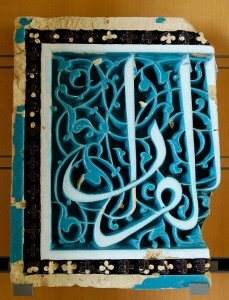
Scholars of Islamic art have come up with various interpretations of the arabesque, looking at its abstraction as a sign of infinite correspondence in mathematical sciences or its delicate appearance as a sign of femininity as detailed in “The Topaki Scroll” by Gulru Necipoglu. However, one of the more prominent interpretations of the arabesque pick up on its allusion to nature.
As described in the documentary “Islamic Art: Mirror of an Invisible World”, the arabesque can serve as a witness to God’s creation. God created the world as al-Muhyi, the Giver of Life to all the creatures (8:24). In all of creation, there is not only the face of God, but also the ayah or the signs of God are all around for the creatures to interpret (2:115, 2:164). Including images of nature in works of art is one way of not only celebrating and praising the beauty of God’s creation but also in becoming closer to God.
With all of this in mind, I found that there were also signs of nature and God’s creation in the plants around my house. Among the few that I saw, I picked out a few that I felt were the most geometric, resembling the orderly nature of God’s creation.
Then I represented each one with a different color in paper, layered on top of each other to create a vibrant arabesque that reflects my own surroundings of God’s creation, my own context, made with my own materials and skills, as common in a cultural-studies approach.
The reason I chose bright colors is because as described in the documentary “Islamic Art: Mirror of an Invisible World”, color is an important means of demonstrating meaning in Islamic art, and I happened to choose colors that would represent nature and life the most (green and yellow) as well as passion and fire (red). Additionally, I worked with the nature of the plants, using the linked nature of the cactus-leafed plant to set the sturdy structure of the piece demonstrating that faith is a constant around which all else is built, the symmetry of the many leafed plant to highlight brilliance akin to the sun to demonstrate that God is the Light, and the swirling stems of the ivy to demonstrate the turbulence and adventure each day will bring.
Though not nearly as intricate as a arabesque carved out of a block of wood (rather, from the pulp of wood that once was), the piece captures the spirit and the essence of this fundamental feature of Islamic art.


